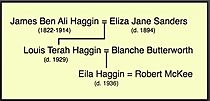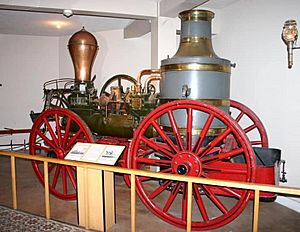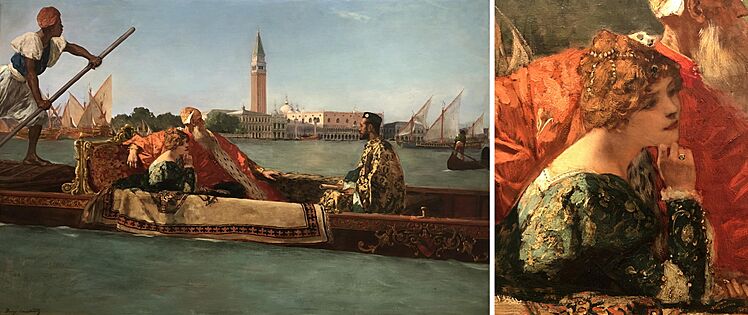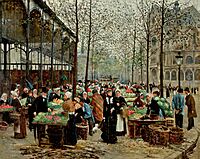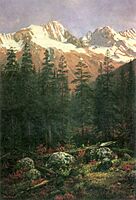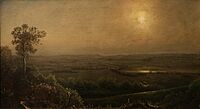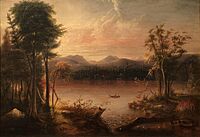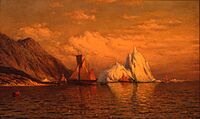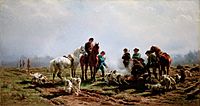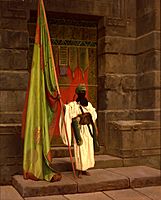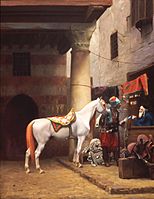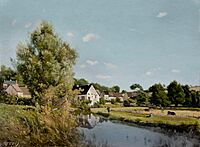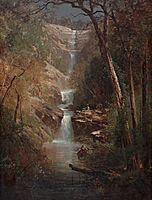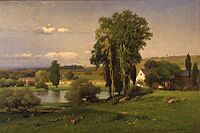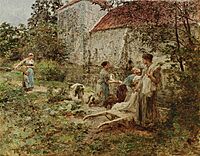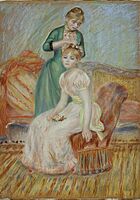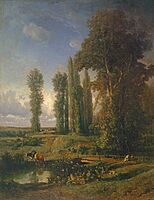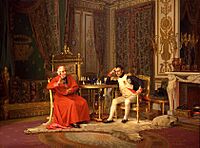Haggin Museum facts for kids
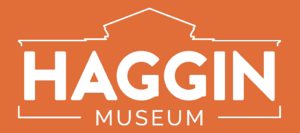 |
|
 |
|
| Established | 1931 |
|---|---|
| Location | 1201 Pershing Avenue. Stockton, CA |
| Type | Art museum, History museum |
| Accreditation | American Alliance of Museums |
| Key holdings | J. C. Leyendecker, Albert Bierstadt |
The Haggin Museum is a special place in Stockton, California, where you can explore both art and history. Located in Victory Park, the museum opened in 1931. It's like two museums in one! One part is filled with amazing paintings from famous European artists like Pierre-Auguste Renoir and beautiful sculptures by artists like Auguste Rodin.
The museum also has a huge collection of American landscape paintings. It has the largest collection of works by Albert Bierstadt in the area. It also has the biggest public collection of art by J. C. Leyendecker, a famous illustrator. Many of his works were given to the museum by his sister.
Contents
The Museum's Story
How the Museum Began
In 1928, a group called the San Joaquin Pioneer and Historical Society wanted to create a museum. They wanted to teach people about history and have a place to show historical items. A local man named Robert McKee and his wife, Eila Haggin McKee, gave them $30,000 to help.
They had two requests. First, the museum had to be named after Eila's father, Louis Terah Haggin. Second, it needed to have galleries for her parents' art collection. The museum officially opened on June 14, 1931.
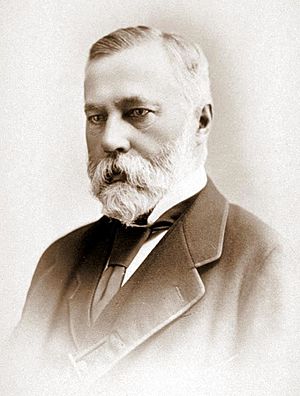
Eila Haggin McKee never visited the museum herself, but she left it $500,000 when she passed away in 1936. Her husband Robert also donated money to build the museum's first addition in her memory. This new section, called the McKee Gallery, opened in 1939. It was filled with art and furniture from the couple's home in New York.
Growing Bigger and Better
The museum kept growing over the years. In 1949, it added new exhibit areas. These included the California Room, the Jennie Hunter Rooms, and the West Gallery. It also added a gallery for old vehicles and weapons.
In 1976, a large donation helped build the Benjamin Holt Wing. This area shows how Benjamin Holt helped change farming with his inventions, like a restored Holt 75 Caterpillar tractor. The donation also paid for new storage areas, offices, and the museum's library.
More recently, in 2017, the museum spent $2.5 million to update its galleries. This included creating a special gallery just for the amazing art of J. C. Leyendecker. Today, the museum is a large, three-story building with lots of space for exhibits.
A Walk Through History
The history galleries at the Haggin Museum take you back in time. You can see artifacts and documents collected by the San Joaquin Society of California Pioneers since 1868.
Life in the Old Days
The Jennie Hunter Rooms look just like a home from the late 1800s. Miss Jennie Hunter, a local rancher, left her furniture to the museum. She asked that it be set up exactly as it was in her house. It feels like you are taking a peek into the past.
Other exhibits show what life was like for Native Americans and for people during the Gold Rush. You can also see recreations of old Stockton businesses from around 1900, like a one-room schoolhouse and a Chinese herb shop. One display even includes a trunk connected to a famous local crime from 1906.
Big Ideas from Stockton
The museum also celebrates the history of farming and industry in the area. You can see old firefighting equipment, a recreated flour mill, and exhibits on shipbuilding. There is even a World War II jeep on display.
World-Famous Art Collection
The heart of the museum's art collection came from the Haggin family. Eila Haggin McKee's grandfather, James Ben Ali Haggin, was a wealthy businessman during the Gold Rush. He bought art for his huge mansion in San Francisco.
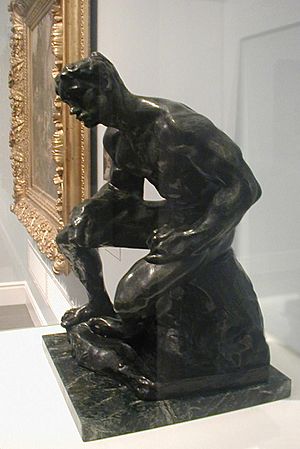
However, it was Eila's parents, Louis and Blanche Haggin, who collected most of the art. They lived in Paris for part of the year and became friends with many artists. They filled their homes in San Francisco, Paris, and New York City with beautiful paintings and sculptures.
What Kind of Art Can You See?
The Haggin Collection has many paintings from the late 19th century. Louis and Blanche loved landscapes, scenes of everyday life, and paintings of animals. They usually avoided religious or historical paintings.
About one-third of the collection is by American artists, and two-thirds is by European artists, mostly from France. They collected many works from artists like Jean Béraud, Albert Bierstadt, and Rosa Bonheur.
Eila first gave the museum 180 paintings. Over time, more paintings were added. Today, the collection has nearly 240 artworks. About 75 of them are usually on display for visitors to enjoy. The museum has also added other artworks over the years, including a famous sculpture by Rodin called The Athlete.
Library and Archives
The Haggin Museum has a library filled with about 10,000 books about art and history. It also has an archive with thousands of historical photos, maps, and documents.
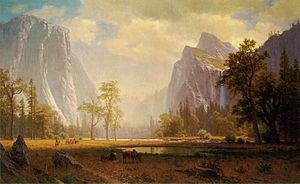
One special part of the archive is dedicated to farming and industry. It has photos and records from the Holt Manufacturing Company, which invented the Caterpillar tractor. It also has information about local boat builders and the "Tomato Queen," a famous businesswoman in Stockton.
The library also has a large collection of cartoons by Ralph O. Yardley. He was a cartoonist for the Stockton Record newspaper for 30 years. His cartoons give a fun and nostalgic look into Stockton's past.
Images for kids
Gallery
-
Afterglow (1870-1875) by William Bradford
-
Old Homestead (1877) by George Inness
-
Woodland Temple (1867) by Thomas Moran
-
La Toilette (1889) by Pierre-Auguste Renoir
-
A Last Summer Day, Normandy (1840-1855) by Constant Troyon


